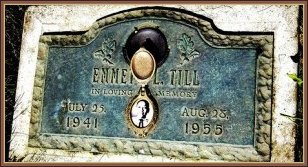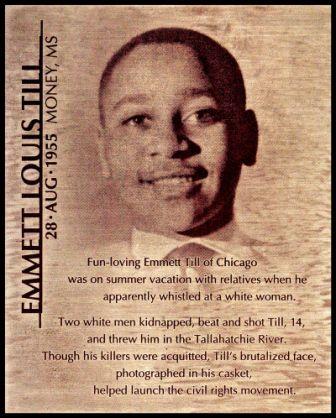- HubPages»
- Education and Science»
- History & Archaeology»
- History of the Americas
The Killing of Emmett Till



The number of people who experienced the severe racial segregation of 1950s Mississippi is rapidly dwindling. But as a nation we can’t afford to forget the tragic and horrifying stories encountered by African Americans, young and old, during that era. These stories delve deeply into the American psyche and strip away any semblance of civility or pretense of humanity we may feel we have.
One such story is about 14 year old Emmett Till, a boy from Chicago who went to visit family living near Money, Mississippi in 1955. Segregation was nothing new to Emmett, but he had never confronted racism practiced with such severe intensity.
Naively he showed some local boys a picture of a girl he claimed was his girlfriend. She was white. Such things did happen in other places, although far from being the norm. But they were unheard of in 1950s Mississippi, so naturally the other boys didn’t believe him. To prove their case one of them pointed to a white lady inside a store and bet Emmett he wouldn’t go in and talk to her. The boys taunted and egged him on until he went in and bought some candy. As he left, he whistled and said "Bye baby" to Carolyn Bryant, the store owner’s wife.

Emmett wasn’t worried, but the other boys were. They knew what happened to blacks who “…didn’t know their place.” However, after a few days passed without incident they soon forgot about it. They shouldn’t have.
Several days later, during the middle of the night, two men came to Mose Wright’s cabin. Mose was Emmett's uncle. The two men were Roy Bryant, the store owner and J.W. Milam, his brother-in-law. They drove off with Emmett.
Three days later, his mutilated corpse was dragged from the Tallahatchie River. One eye had been gouged out and his head had been crushed. He had also been shot in the head. Emmet’s body was so disfigured his uncle could only identify his nephew from an initialed ring he always wore.
Bryant and Milam had been arrested for kidnapping even before Emmett's body had been discovered. The case quickly attracted national attention with media reporting all "decent" people were shocked and disgusted over the murder and "justice would be done.” However, it was immediately obvious it wouldn’t. No local white lawyers were willing to represent the two accused.
Emmett's body was shipped back to Chicago at the request of his mother, Mamie Bradley. Mamie insisted on an open-casket funeral, so all could see what had happened to her son. With national media coverage, including the popular black publication Jet, thousands saw Emmett's body. A national public opinion poll revealed a majority of black radio preachers were addressing Emmett Till’s tragic death and demanding something be done about the situation in Mississippi.
Whites in the state were offended by the Northern criticism as well as the NAACP's stance of labeling the murder nothing less than a lynching. Now the trial was getting prime national coverage, five self serving prominent lawyers hoping to profit from the situation offered to defend Milam and Bryant. Likewise, officials who had initially denounced the murder swung their support towards the two defendants. Their trial began on September 19, 1955 in a segregated courthouse at Sumner, Mississippi.
At that time in Mississippi, it was unheard of for a black to publicly accuse a white of committing a crime, so it was difficult to find witnesses willing to testify. Finally, 64 year old Mose Wright took the stand and pointed to Milam and Bryant as the two who had kidnapped Emmett Till. Wright's bravery inspired other blacks to testify. Fearing for their safety all of the black witnesses were escorted out of the state for their protection.
However, in the end their testimony came to naught. The jurors, being influenced by the defense’s prejudicial closing statements, deliberated for just over an hour and then returned a not guilty verdict stating "I feel the state failed to prove the identity of the body." Ironically it was September 23rd the 166th anniversary of the signing of the Bill of Rights.
There are those who say we should put atrocities like this behind us as it only serves to divide us as a nation and such things don’t happen in America today. Perhaps, but they are still happening in many other places around the world. And history has a nasty habit of repeating itself.





